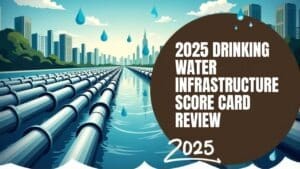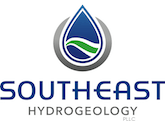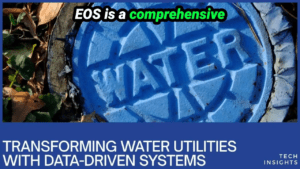
America’s infrastructure is at a crossroads, and nowhere is this more evident than in the state of our drinking water systems. The American Society of Civil Engineers (ASCE) releases an annual Infrastructure Scorecard that evaluates the health and performance of 18 critical infrastructure categories across the country. In this comprehensive overview, we focus on the 2025 scorecard, with a special emphasis on drinking water infrastructure — a sector that is vital to public health, yet faces chronic underfunding and aging assets.
Understanding the 2025 Infrastructure Scorecard
The ASCE’s scorecard assigns letter grades to categories ranging from aviation and roads to wastewater and drinking water. The overall grade for U.S. infrastructure currently stands at a “C,” signaling a need for substantial improvement. While some sectors show incremental progress, the majority, including drinking water, continue to lag behind due to aging systems and insufficient investment.
Why Infrastructure Matters
Infrastructure isn’t just about pipes and roads — it’s about the safety, resilience, and quality of life for communities nationwide. The scorecard highlights the increasing vulnerability of infrastructure systems to natural disasters and extreme weather events, underscoring the urgent need for resilience planning. Hurricanes, floods, and earthquakes have repeatedly exposed weaknesses in our infrastructure’s ability to recover quickly and maintain service.
Resilience is a core theme throughout the report, emphasizing that infrastructure must not only be maintained but also fortified against future challenges. This is especially critical for drinking water systems since access to clean water is a cornerstone of public health during emergencies.
The State of America’s Drinking Water Infrastructure
Current Grade and Investment Gap
Drinking water infrastructure received a “C-” on the scorecard, reflecting the widespread challenges across the nation. The system consists of over two million miles of underground pipes operated by nearly 150,000 public water systems. Many of these pipes date back decades, with some segments installed as far back as the 19th century. Pipes laid after World War II, with lifespans of 75 to 100 years, are also reaching the end of their design life.
According to the report, America’s drinking water systems require an estimated $1.7 trillion over the next ten years to meet current and future needs. However, anticipated investments total only about $655 billion, leaving a staggering $1 trillion shortfall. This gap is reflected in the aging infrastructure, increasing leaks, and deferred maintenance that many water utilities face.
Leakage and Non-Revenue Water
One of the most pressing issues is non-revenue water — water lost through leaks and breaks in distribution systems. The U.S. loses the equivalent of over 50 million Olympic-sized swimming pools of water every year due to leaking infrastructure. This not only wastes a precious resource but also drains funds that could be used for improvements.
Challenges Facing Water Utilities
Funding and Rate Structures
Funding for drinking water infrastructure primarily comes from user rates, but many utilities struggle to set rates that truly reflect the cost of maintaining and improving their systems. The report notes that only about 20% of water utilities can fully cover the cost of service through rates, leaving 80% chronically underfunded.
This underfunding often leads to deferred maintenance, which may save money in the short term but results in more costly repairs and emergency fixes down the line. Utilities are urged to adopt capital improvement plans and asset management plans that align with realistic rate structures to ensure sustainable funding.
Capacity and Growth
Population growth in many parts of the country places additional strain on water infrastructure. Expanding service to new residential developments requires not only extending pipe networks but also securing reliable water sources. Many smaller water utilities lack comprehensive growth plans, which can lead to service challenges and increased costs.
Workforce and Expertise
Another critical issue is workforce sustainability. The water sector faces a “silver tsunami,” with many experienced operators retiring and a shortage of younger professionals entering the field. Recruiting, training, and retaining qualified personnel is essential to maintaining safe and reliable water systems.
Key Recommendations for Improvement
Asset Management and Resilience Planning
Asset management plans are highlighted as the cornerstone of effective water utility management. These plans help utilities prioritize investments, minimize lifecycle costs, and improve decision-making. The scorecard stresses that many small utilities either lack adequate asset management plans or fail to use them effectively.
Integrating resilience into asset management is crucial. Utilities need to prepare for natural disasters and other disruptions by ensuring systems can continue operating or recover quickly. This includes conducting risk and resilience assessments and updating emergency response plans regularly.
Increasing and Sustaining Investment
Sustained funding is essential to bridge the investment gap. The scorecard calls on federal and state governments to maintain and increase funding through grants, loans, and revolving funds. For example, the Drinking Water State Revolving Fund plays a key role but requires consistent appropriations to meet growing needs.
Utilities are also encouraged to develop rate structures that accurately reflect the true costs of service, including capital improvements and maintenance. Relying solely on grants and loans is not sustainable; a balanced approach is necessary.
Embracing Innovation and Technology
Emerging technologies offer promising solutions to longstanding problems. AI-driven predictive maintenance, digital meter reading, and GIS mapping are becoming accessible even to smaller utilities at reasonable costs. These tools enable proactive maintenance, reduce leaks, and optimize resource use.
Utilities should leverage data-driven decision-making to improve operations and extend asset lifespans. Investing in technology not only saves money over time but also enhances system reliability.
Policy and Regulatory Modernization
The report calls for streamlining government permitting processes to reduce delays and enable infrastructure projects to proceed more efficiently. Modernizing compliance and coordination between agencies can help projects move forward in parallel rather than sequentially, accelerating improvements.
Addressing Lead Service Lines and Emerging Contaminants
Replacing lead service lines remains a high priority due to health risks. Additionally, treatment for emerging contaminants like PFAS demands significant capital investment. Federal support for monitoring and remediation efforts is critical to protecting public health.
Consolidation of Small Water Systems
Small water systems often face disproportionate challenges in funding, compliance, and maintenance. The report suggests efforts to consolidate smaller systems into larger, more sustainable entities to improve efficiency and service quality.
Conclusion: The Road Ahead for America’s Drinking Water Infrastructure
The 2025 Infrastructure Scorecard paints a clear picture: America’s drinking water systems are aging, underfunded, and in need of urgent attention. Closing the vast investment gap will require coordinated effort from utilities, governments, and communities alike.
Key to success will be embracing asset management and resilience planning, securing sustained funding, adopting innovative technologies, and modernizing policies. Equally important is ensuring that rate structures reflect true costs and that the next generation of skilled water professionals is trained and retained.
While the challenges are significant — with a trillion-dollar funding shortfall looming — the path forward is clear. Prioritizing clean, safe, and reliable drinking water infrastructure is not just an investment in pipes and pumps; it’s an investment in the health and future of every community across America.
For those interested in exploring the full details, the American Society of Civil Engineers provides the complete 2025 Infrastructure Report Card online for free. Understanding the data and recommendations is the first step toward building a more resilient and sustainable water future.

